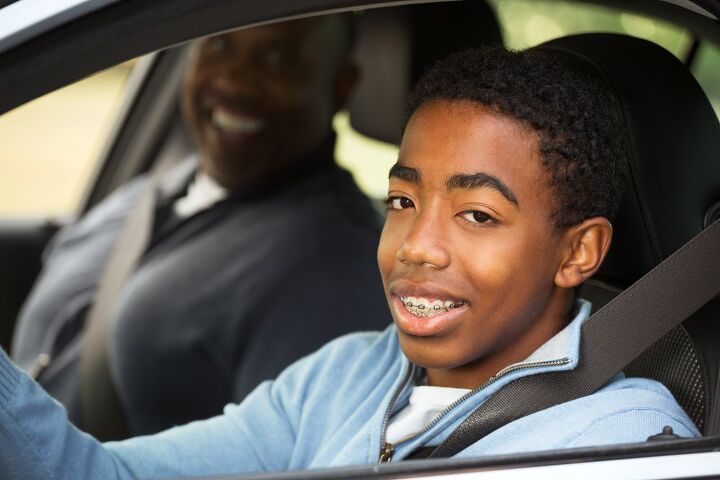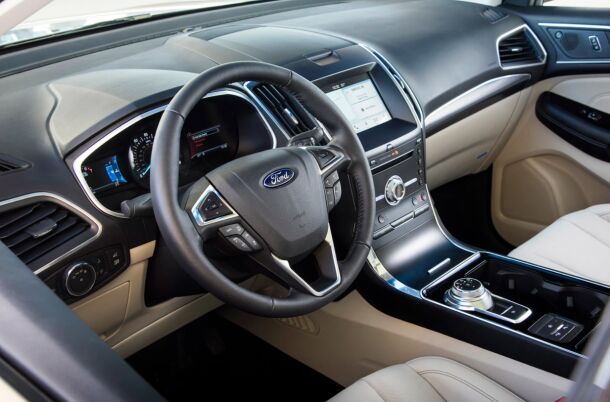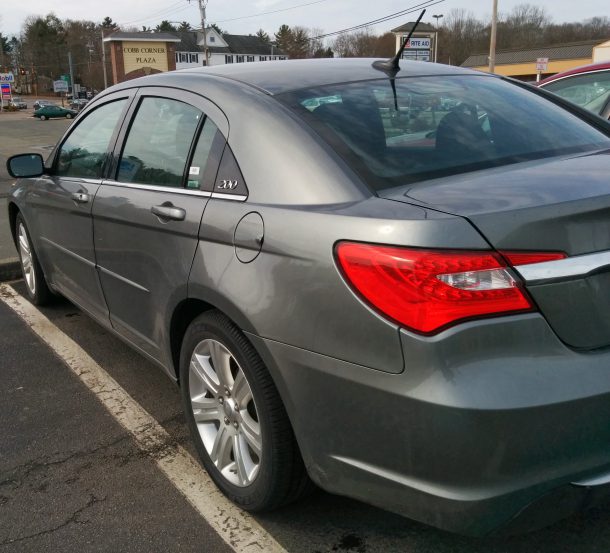#TeenDrivers
Teen-Spirited Driving Increases During the Pandemic [Updated]
Teen drivers aged 16-19 and their passengers accounted for speeding-related fatalities in greater proportions than any other age group, said the Governors Highway Safety Association (GHSA) in analyzing data over a five-year period from 2015 to 2019.
During that time, 4,930 teen drivers and their passengers died in 43 percent of speeding-related crashes, versus 30 percent of drivers in all other age groups. The GHSA’s report released last month, Teens and Speeding: Breaking the Deadly Cycle, analyzed the driver’s sex, inability to control the vehicle, and likelihood that the driver and occupants are buckled or not.
IIHS: Small Cars Remain, by Far, the Deadliest Ride for Teens
The other week we brought you a list of best used car buys for teen drivers. Driver safety factored heavily into the choices compiled by the Insurance Institute for Highway Safety (IIHS) and Consumer Reports, with the cheapest offerings obviously being car-like in nature.
With their lower prices, cars remains the ride of choice among teens, despite the new vehicle market shifting violently away from traditional three-box conveyances. They’re also the type of vehicle teens are most likely to turn up dead in, and the trend shows little change, despite the rapidly evolving auto landscape.
Georgia Ditches Driver's License Road Tests During Pandemic
With state governments enacting countless changes during the current health crisis, many have risen up to decry the walking back of our civil liberties. Some are absolutely convinced leadership has crossed a line by prohibiting (or criminalizing) rights guaranteed to them by the United States’ founding documents in a time of crisis. Others are just angry because they think the economic ramifications of shutdown orders are screwing things up more than the coronavirus itself.
One group that is assuredly not complaining, however, is Georgian teens.
Extending its state of emergency, Georgia is indefinitely suspending the need for youngsters to pass their road test in order to procure their driver’s license. That’s per one of the many executive orders issued by Gov. Brian Kemp this month. He remains adamant that the state needs to reopen for businesses, but says it has to be done smartly, with some businesses revived while others have to wait. Allowing parents to vouch for children with a learner’s permit is seen as part of the plan.
Why Are Teens Growing Disinterested in Automobiles?
When I was an adolescent, it was made clear to me that the first step toward adulthood was getting my driver’s license. Even without an automobile, it provided unimaginable freedoms and brought me closer to my goal of doing a burnout in the high school parking lot. That dream was ultimately achieved, leaving me to rethink roadway safety as my first car was loaded onto a flatbed while the scent of tire smoke and bleach clung to my clothing.
Fortunately, hitching a ride home was easy, as most of my friends had also acquired licenses and cars of their own. But that’s probably not going to be the case for teens coming of driving age in these modern times.
According to the Federal Highway Administration, the percentage of American teenagers bothering to get their licenses has effectively plateaued at a low point. Nearly 48 percent of 16-year-olds in this country could legally drive in 1984; that number settled to just 25.6 percent in 2018. The reasons are more complicated than just the younger generation’s snubbing of the automobile.
IIHS Recommends Putting Your Teen Behind the Wheel of the Largest Vehicle Possible
Assuming you’re the sort of parent who’s willing and able to buy your child their first vehicle, you’ve probably made safety your top priority. While you could purchase a new vehicle with all the latest self-preservation tech, teens have a habit of scratching up cars. If you buy them an old clunker, they’ll learn a valuable lesson about the importance of auto maintenance but won’t be as protected when they crash into something — which they’re statistically more likely to do.
The Insurance Institute for Highway Safety recently updated its list of recommended vehicles for teens, promoting the “bigger is better” mentality. It claims an older, larger used vehicle is often a safer choice when compared to a newer small vehicle that costs roughly the same. While the institute’s suggestion makes sense, it’s also one step removed from recommending putting teenagers in armored personnel carriers.
Nearly Three-quarters of Tech-savvy Ford Owners Don't Trust Their Kids
Once upon a time, a kid who’d been handed the keys to the family car only stopped accelerating when a stop sign or red light approached, the vehicle ran out of gas, a speed trap appeared in the distance, or they hit the governor.
Today, technology allows parents to pry into their kids’ lives like never before. Moms and dads can harass their offspring remotely with phone calls and text messages, keep tabs on their behavior via social media posts, and even follow their minute-by-minute travels via phone tracker apps. Childhood is dead and parents are the new KGB. With its MyKey system, Ford seized on the modern parent’s growing paranoia and offered these human helicopters the opportunity to lock their crossover into “sedate” mode before tossing junior the keys. Well, fob.
But how many people actually use the feature? As it turns out, plenty. But to use it, they first need to know it exists.
Toyota's Safe-driving App Relies on Embarrassing Teenagers
Teen drivers have the highest crash rate of any demographic. Younger drivers are most likely to use their phones while driving or speed in high-traffic areas, and roughly half of all accidents associated with younger drivers were single-vehicle crashes. According to the National Center for Health Statistics, motor-vehicle crashes are the leading cause of death among individuals under 20.
Keeping younger drivers safe is a major concern for institutions like the National Safety Council, but some automakers have their own initiatives. Toyota, for example, had TeenDrive365, which provided a series of online videos aimed at encouraging safer driving habits. While the automaker abandoned that program after 2014, resulting in all of its content mysteriously vanishing, Toyota still seems keen on keeping young motorists on the road and out of the morgue.
However, what’s the best way to encourage responsible driving? Teens don’t like being placated, and they probably know the laws better than older drivers (as they’ve passed their written test far more recently). With this in mind, Toyota thinks humiliation may be the key. The automaker has made mortifying easily embarrassed teens the central theme of its new safety app.
IIHS Wants Your Teen Driver Behind the Wheel of These Square Used Vehicles
If you’re planning to buy your teen son or daughter their first vehicle — rather than let them work a retail job to save up for a rusting heap — the Insurance Institute for Highway Safety wants a word.
There’s good and almost-as-good choices for used cars out there, and none of them are a ’95 Cavalier with a blown suspension and more fluid leaks than the Bismark. While the IIHS top picks pack piece of mind for parents, kids might cringe at the less-than-sexy choices.
Ask Bark: Beater For The Kid, Bimmer For Me
Doug writes:
Hi Sanjeev,
(OH FFS)
I am coming up to a time that many of us must face. My son is about to turn 16 and will need to have his own ride. Currently, we own a 2012 Toyota Highlander that my wife drives, and a 2013 Honda CR-V that I drive. I am currently scheming to dedicate the CR-V to my son and then my daughter as they begin driving, then buy something for me to enjoy driving for a while. My sights are set on a used 2008-2012 BMW 328 that is in the 70,000 mile range. I have always wanted something like this, but would not be able to afford a new one.
So here is my quandary: my wife likes that the CR-V is well rated on safety and that it is not too powerful of a car. But, she and others think the car is too new.
Study Reveals the Best States for Teen Drivers. Sorry, South Dakota
Statistics show that, as a whole, teen drivers are unsafe, and could easily saddle you with a huge repair bill.
So, what’s the best state to live in if you’re planning to hand your keys to someone aged 15 to 24? A new study by WalletHub maps it out, ranking each state based on three categories — safety conditions, driving laws and economic environment.



![Teen-Spirited Driving Increases During the Pandemic [Updated]](https://cdn-fastly.thetruthaboutcars.com/media/2022/07/10/8892383/teen-spirited-driving-increases-during-the-pandemic-updated.jpg?size=720x845&nocrop=1)





















Recent Comments